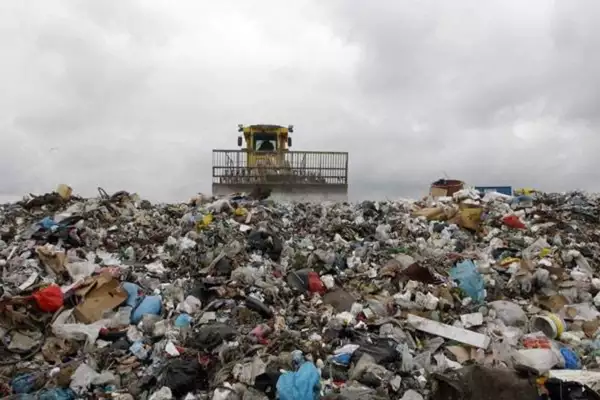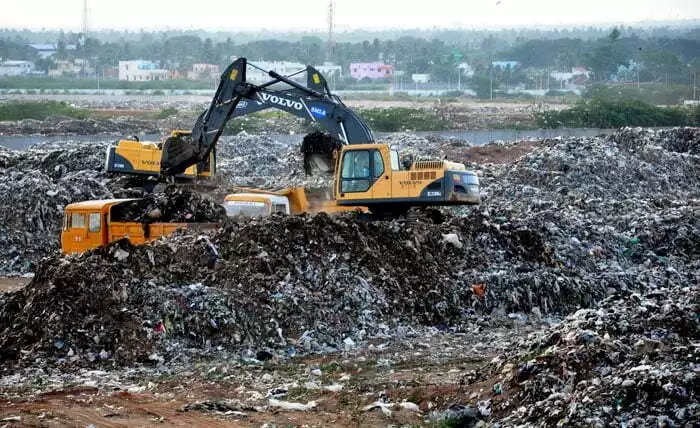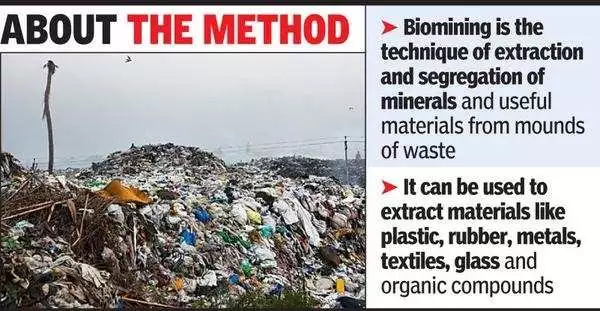The legacy waste management project under the Swachh Bharat Mission 2.0 has been criticized for its slow progress, with only 16% of the targeted land reclaimed so far. This raises concerns about the effectiveness of waste management strategies in urban areas.
About the Swachh Bharat Mission 2.0:
- Objective: Achieve “Garbage-Free Status” for all cities through:
- 100% source segregation
- Door-to-door waste collection
- Scientific management of all waste fractions
- Launch Date: October 1, 2021
- Duration: Five years (up to October 1, 2026)
About Legacy Waste
- It is aged municipal solid waste in landfills or dumpsites without proper management.
Categories of Legacy Waste:
- Contained and/or Stored Waste: Waste held in tanks, canisters, or stainless steel bins.
- Buried Waste: Waste that has been buried in the ground.
- Contaminated Soil and Groundwater: Soil and water sources affected by waste.
- Contaminated Building Materials and Structures: Materials and structures that have been compromised due to waste contamination.
Consequences:
- Space Occupation: Legacy wastes occupy large areas, reducing available land for other uses.
- Breeding Grounds: These wastes can become habitats for pathogens, flies, and other vectors, leading to public health risks.
- Malodours: The decomposition of organic waste can generate unpleasant odors.
- Leachate Generation: Legacy waste can produce leachate, a toxic liquid that may contaminate water sources.
- Greenhouse Gas Emissions: Decomposing waste contributes to the release of greenhouse gases, exacerbating climate change.
- Fire Risks: The accumulation of waste poses a risk of uncontrollable fires, which can threaten nearby communities and ecosystems.
Recommended Strategies for Improvement
- Sustainable Solid Waste Management (SWM) Plan: Develop comprehensive strategies for waste management.
- Maximize Utilization of Recovered Fractions: Enhance recycling and recovery processes.
- Capacity Building: Strengthen urban departments’ abilities to manage waste effectively.
- Sustainable Reuse of Reclaimed Land: Implement practices for environmentally friendly land use after reclamation.
Current Status of Legacy Waste Management
- Total Dumpsites: 2,424 identified across the country (each with more than 1,000 tonnes of legacy waste)
- Completed Remediation: 470 dumpsites (16% of total)
- Ongoing Remediation: 1,224 dumpsites
- Untouched Dumpsites: 730 dumpsites
- Area Covered:
- Total area of dumpsites: 28,460.33 acres
- Area reclaimed: 4,552.34 acres (16%)
- Area yet to be reclaimed: 23,908 acres (84%)
State Performance
- Top State in Area Reclaimed: Tamil Nadu (837 acres reclaimed, 42%)
- Best Performing State: Gujarat (75% area reclaimed, 698 out of 938 acres)
Ref: Source
| UPSC IAS Preparation Resources | |
| Current Affairs Analysis | Topperspedia |
| GS Shots | Simply Explained |
| Daily Flash Cards | Daily Quiz |
Frequently Asked Question:
What is legacy waste?
Legacy waste refers to aged municipal solid waste in landfills or dumpsites that lack proper management.
What are the categories of legacy waste?
Legacy waste includes stored waste, buried waste, contaminated soil, groundwater, and compromised building materials.
What are the major risks associated with legacy waste?
Legacy waste leads to space occupation, health risks, leachate production, greenhouse gas emissions, and fire hazards.
How much land has been reclaimed from legacy waste dumpsites?
So far, only 16% of the total identified dumpsite area has been reclaimed under Swachh Bharat Mission 2.0.
Which state has reclaimed the most land from legacy waste?
Tamil Nadu has reclaimed 837 acres, the largest area among states.




